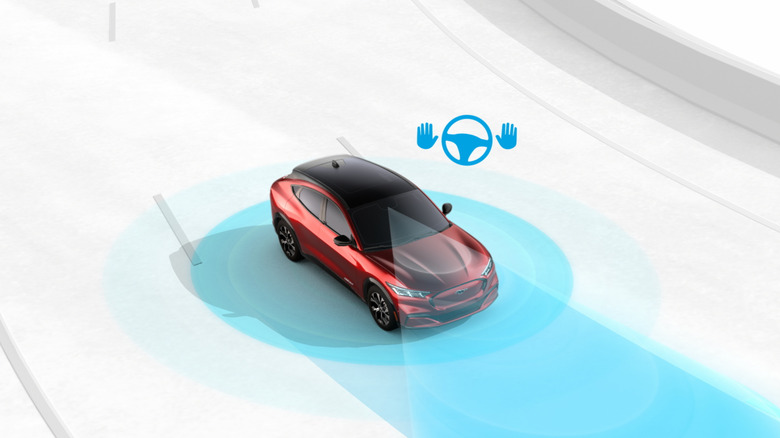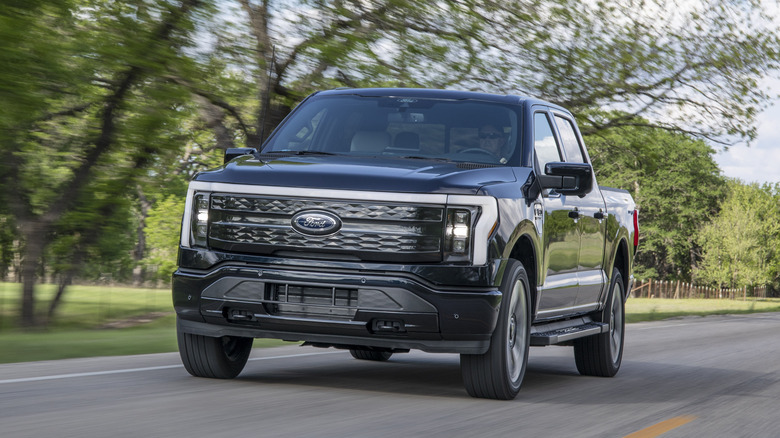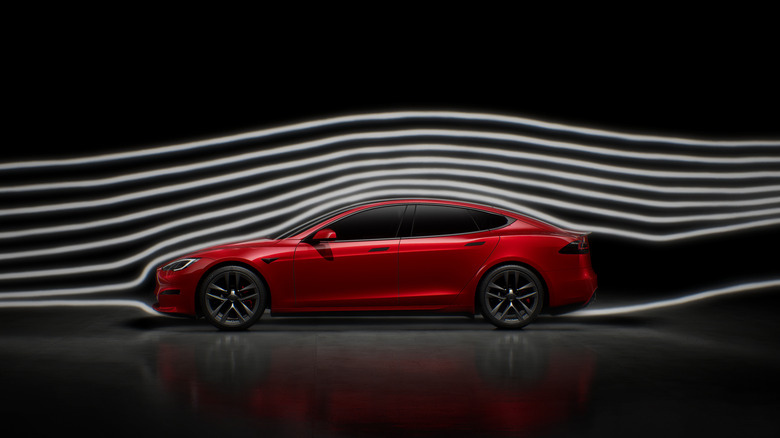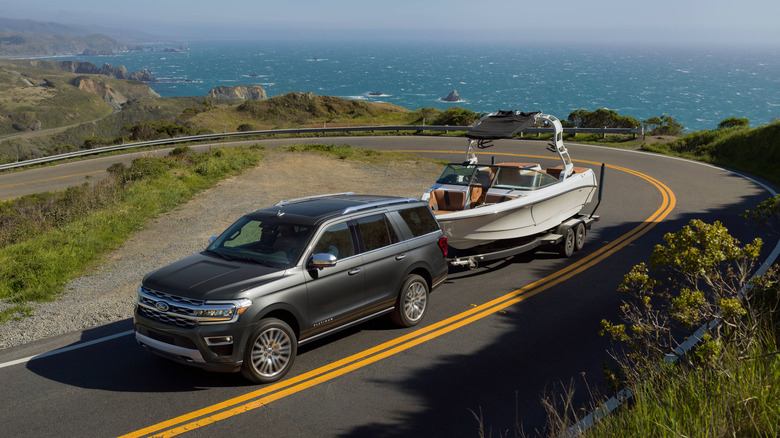Ford BlueCruise Vs Tesla Autopilot: Which Is Better For Road Trips?
As the production of cars gets more advanced, throwing down more horsepower and torque than ever before, safety systems also get more advanced. One such push by automakers in recent years is the introduction of driver assistance systems. Two such systems are Ford BlueCruise and Tesla Autopilot.
Both are Level 2 autonomous driving systems, as described by the Society of Automobile Engineers (SAE) International. That means that both systems require constant input from the driver, and do not allow for total hands-free driving for the duration of the trip, and are, by nature, very limited in scope and ability. That said, each system has the potential to offload some of the more tedious or monotonous driving tasks to the car itself and allow the driver to experience at least a bit of assurance behind the wheel.
Ford has been trying its darndest to make strides in the world of EVs and steal the electrified crown from Tesla with EVs like the F-150 Lightning and Mach-E. But which automakers' driver assistance system holds up best to the rigors of a long road trip lasting hundreds or thousands of miles?
Ford BlueCruise
For starters, BlueCruise is fairly limited in the scope of vehicles it's available on. It's only available on the Mustang Mach-E, the XLT, Lariat, Platinum, and Tremor trims of the F-150, Platinum, and Lariat trims of the EV F-150 Lightning, and Platinum trim models of the Ford Expedition. Additionally, it's available on both the Lincoln Corsair and Lincoln Navigator, regardless of trim level.
Currently, BlueCruise 1.3 is the latest version, and the system includes adaptive cruise control, lane change assist, and the ability to reposition the car inside the lane if it strays outside the lines. According to Ford, BlueCruise works on 97% of the highways in the United States and allows for somewhat hands-free driving on a large portion of highways. Although judging by Ford's coverage map, you will need to take control of the vehicle on nearly every road that isn't a major highway. And for safety's sake, you should never have your hands off the wheel for any extended period of time whatsoever.
The previous version, the Ford BlueCruise 1.2 system is found to be sensible, but it is ultimately lacking in coverage, and the system has a tendency to abruptly change speeds at times. Given that many major highways are covered in a strict road trip scenario, having Ford BlueCruise enabled might make the bi-yearly trip to Disney slightly less strenuous.
Tesla Autopilot
On the other hand, Tesla Autopilot is significantly more controversial than Ford's option. The same could be said about the entirety of Tesla. The full self-driving system, which is separate from the autopilot system, came under immense fire and has faced many legal and safety challenges, one due to a shocking dashcam video showing an autopilot Tesla crashing into emergency vehicles. That can't be ignored when it comes to driver assistance features. And given Elon Musk and Tesla's tendency to over-promise, it's best to pay extra attention.
At least on paper, Tesla's system touts much of the same abilities as Ford BlueCruise, meaning it can steer, slow down, and speed up by itself within a lane. However, Tesla does not make the same geographic concessions as Ford. Tesla takes great pride in its cameras that (theoretically) allow Tesla Autopilot to be used on more roads than Ford's system, not just major highways. The system also includes Smart Summon features that Ford does not have. As far as a road trip is concerned, you don't have to worry about the system's compatibility with the road you are driving on. And given the fact Teslas are electric, the onboard system is able to automatically guide you towards any Tesla Superchargers during the drive, a feature that's particularly helpful in unfamiliar areas.
Nonetheless, Tesla has the leg up on Ford as far as driver assistance features are concerned. Tesla has also been in the game longer, and as Autopilot capabilities improve, they will continue to be upgraded by over-the-air software updates.
The verdict
For a road trip, the victor would have to go to Ford, even though the technology may not be as capable as Tesla's. And as of now, it only works on a set number of highways. Not only will the number of compatible roads go up in the future, but Ford has a better attitude toward safety improvements than Tesla has shown in the past. An individual Tesla likely isn't going to go haywire while in autopilot mode. Still, given the sheer number of safety investigations into the brand and its supposed autonomous driving technology, it's tough to make an honest recommendation.
When it comes to long-distance driving, Ford's system covers most major highways to the point where it likely won't be a problem if you're going across the country. But it's still something to consider. If coverage is a deal-breaker and you don't mind stopping to take in the sights and fill up on electrons at a charging station, then Tesla's Autopilot might be the driver assistance package for you.
There's also the final question of price. Base Autopilot is standard on all Teslas, and the Enhanced Autopilot, which includes Smart Summon, automatic lane changes, and navigation features, is a $6,000 option. Ford's BlueCruise 1.3 is a $2,100 option on the Mustang Mach-E, and BlueCruise 1.0 is a $1,995 option on the gas-powered F-150.



